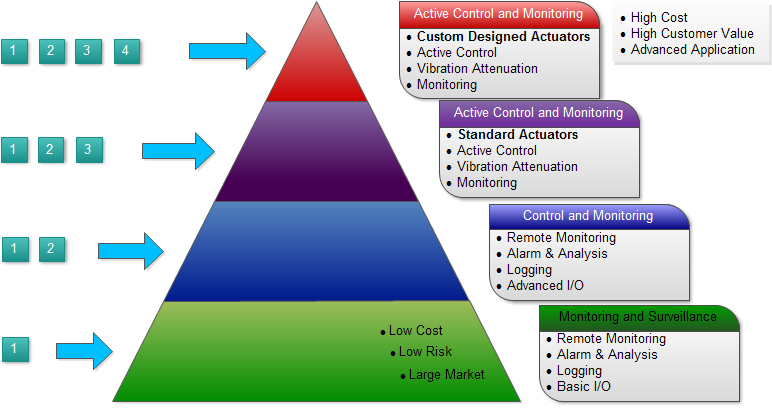

Background – ConceptThere is a broad need to solve different types of vibration problems. Noise pollution is an increasing problem in both industry and the modern technological society. It is well documented that repeated exposure to even moderate levels of noise can be injurious to health, with respect to pervasive physiological and psychological effects. |
 |
|---|
Some of the vibration/noise problems are simple by nature and others are more complex.
Sometimes it’s only necessary to monitor the vibration or noise levels.
For example, in industry a process could be monitored and if necessary an operator or central could be alerted if any
limit would be exceeded, so the operator could regulate the processes and prevent damage.
When the problem is more complex a more thorough investigation is needed in order to find a solution to the particular problem.
In this case initial measurements are often necessary, and based on the results a solution is proposed which could be
either passive or active vibration attenuation.
Usually, a passive solution is preferred due to cost and simplicity of the solution.
Such a solution could be redesign of a mechanical system by increasing/decreasing mass,
stiffness and damping. Sometimes dimensions and joints needs to be reconsidered.
However, it’s not always possible to achieve the desired attenuation with a passive solution due some constrains
of the application/system. Such constrains could be weight or volume. It could also be that any modification or
redesign of the system would be too costly. This is usually the case with machines or buildings that have been in
use for some time and that have been integrated into a context.
The product portfolio has been divided into the following groups:
- Monitoring and Surveillance
- Control and Monitoring
- Active Control and Monitoring - Basic
- Active Control and Monitoring - Advanced
To cover these groups the following hardware haven been designed:
- CPU Board: With main software for logging and communication.
- DSP Board: With capacity of various control algorithms in real-time.
- Amplifier Board: Designed to handle both electromagnetic actuators as well as piezo-ceramic actuators.
- Mechanical Interface: Designed to accomplish appropriate force at desired locations.
See how the hardware components fit to each group in the pyramid below!

